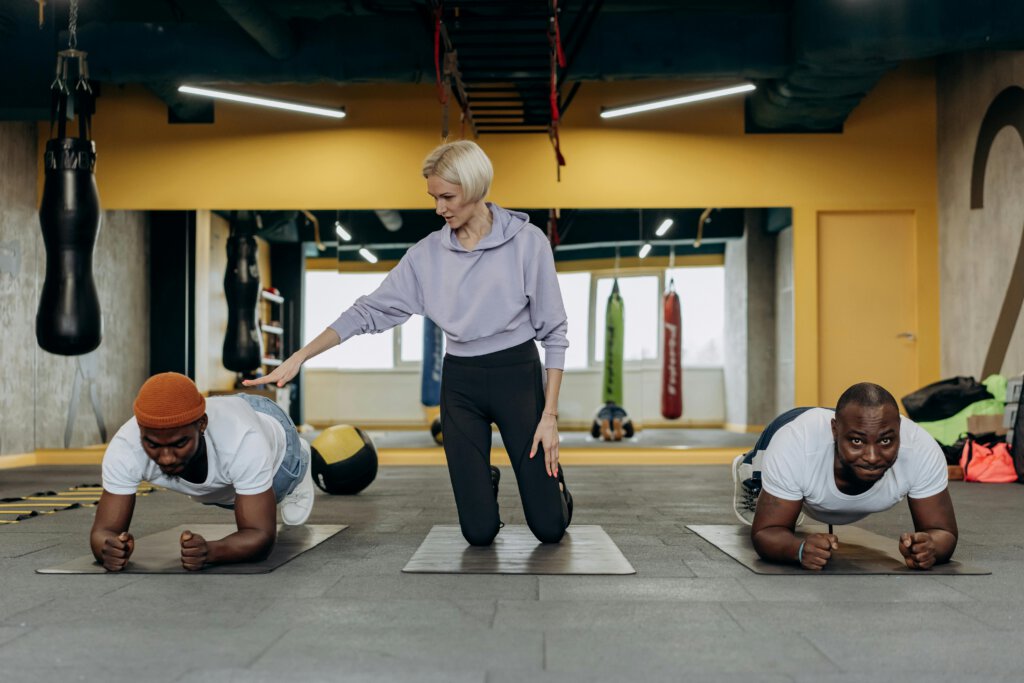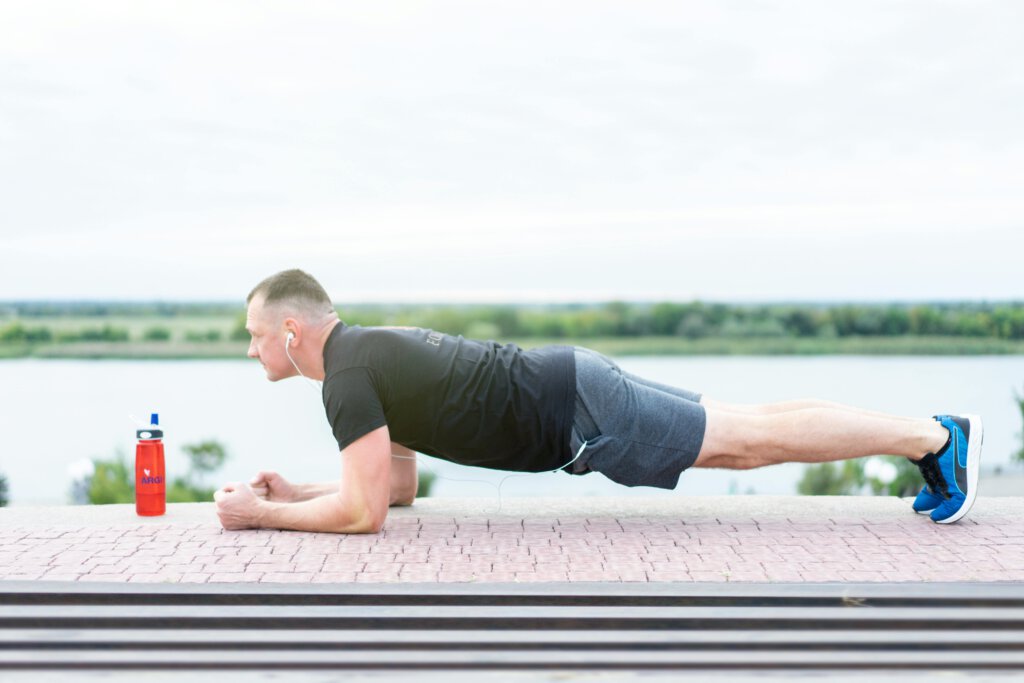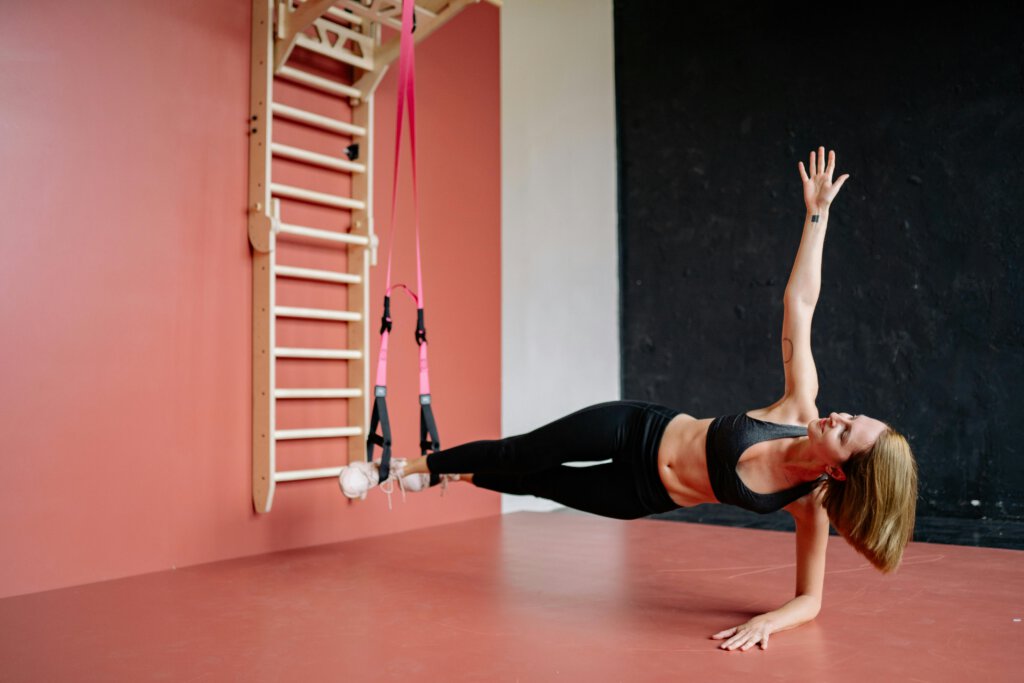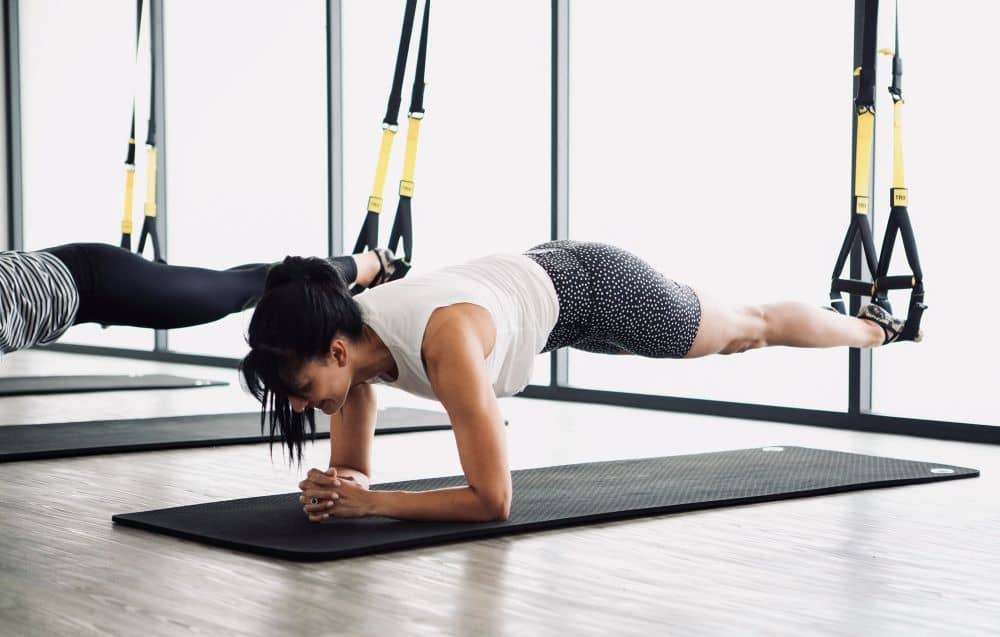Why planks are essential for calisthenics beginners
Planks may look simple, but they’re one of the most powerful exercises a calisthenics beginner can master. Did you know that holding a proper plank for just one minute engages more than 20 different muscles at once? From your core to your shoulders, planks build the foundation for nearly every bodyweight movement.
For those starting their calisthenics journey, understanding why planks are so effective is essential. This article explores how planks improve strength, posture, and endurance and explains why they’re a stepping stone to push-ups, pull-ups, and advanced moves. We also provide you with a custom workout plan that you can try out.
The role of core strength in calisthenics
Core strength in calisthenics is like the foundation of a house, without it, the whole thing crumbles. Beginners often think calisthenics is all about arms or chest, but if the midsection isn’t solid, movements like push-ups, pull-ups, and especially levers, feel way harder than they should.
Many beginners make the mistake of skipping core stability and rushing into flashy skills. But here’s the thing: building deep core muscles with isometric core exercises early on helps prevent back pain and makes progress smoother. A six pack is not just built in one session by the way, just so you won’t forget hehe.

Core stability does directly improve movement efficiency and reduces injury risk in bodyweight training.Planks are one of the simplest ways to learn this. Holding a forearm plank correctly lights up the transverse abdominis, which is the “corset” muscle that keeps your spine stable. Calisthenics progressions like front levers or planches feel more controlled.
Takeaways
- Core stability prevents energy leaks and injury.
- Planks train deep core muscles for calisthenics control.
- Beginners progress faster when they don’t ignore core strength.
Benefits of planks for calisthenics training
The benefits of planks for calisthenics training go beyond “plank for abs.” A proper plank improves posture, spinal alignment, and teaches the body to move as one unit. People often overlook that most calisthenics moves, push-ups, dips, and levers are basically advanced planks in motion.
One common mistake is doing planks just for time. Sure, holding a 3-minute plank looks cool, but if the hips are sagging, it’s not helping posture. Correct form builds endurance in stabilizing muscles, which is what protects the lower back. A strong core also improves balance and coordination, so skills like handstands feel more stable.
There’s also an underrated benefit: injury prevention. By strengthening muscles around the spine and shoulders, planks reduce strain when learning calisthenics bodyweight exercises. This is why they’re considered one of the best core exercises for calisthenics.

Takeaways
- Planks improve posture and spinal health.
- Balance, coordination, and injury prevention are huge benefits.
- Strong planks transfer directly to calisthenics push-ups, dips, and levers.
- Ofcourse, overtime you will develop that six pack too.
For people struggling to stay consistent, resistance bands can add light resistance to planks, making them engaging without needing extra equipment. Slip one around the wrists or ankles during planks, it’s simple but surprisingly effective.
Different types of planks and their variations
Different plank variations keep calisthenics core training fresh and prevent plateaus. The standard forearm plank is the foundation, it teaches alignment and engages plank muscles worked like abs (six pack), glutes, and shoulders. Beginners often overlook squeezing the glutes, which is why their backs ache after planks and that does not feel so nice.
Side plank benefits are huge too. They target obliques, which are critical for moves like windshield wipers or side levers. Plus, they improve lateral stability, something most people don’t even think about until they try one-arm push-ups.

Extended plank variations are great for shoulder stability. Moving the arms further out forces the core to brace harder, mimicking the demands of planches and front levers. But many mess up by letting their lower back sag, which is why progression is key.
Finally, dynamic plank exercises like shoulder taps or plank-to-push-ups add movement. This trains stability under shifting loads, making it a natural step toward calisthenics progressions.
If you’re training at home, a good investment is a Yoga mat. Thick enough to protect elbows during planks and durable for daily plank workout routines. Beginners often quit because of elbow discomfort, and a Yoga mat solves that.
Takeaways
- Standard plank is the foundation for beginners.
- Side planks build oblique strength and balance.
- Extended and dynamic planks prepare for advanced calisthenics.
How long should beginners hold a plank?
When it comes to plank duration for beginners, the sweet spot is usually 20–30 seconds. A mistake many beginners make is holding too long too soon, leading to sagging hips or lower back pain. “Quality beats quantity every time”.
The smartest way to progress is adding 5–10 seconds per week, only if form stays solid. Another tip: instead of just timing, try counting slow breaths. Controlled breathing keeps the core engaged and teaches endurance.
Eventually, when you can hold a clean 1-minute plank, that’s usually the green light to try plank progression exercises like dynamic planks or side planks. Static holds are great, but calisthenics strength training requires learning to stabilize while moving too.
“Rome wasn’t built in a day,” as the saying goes. Same goes for planks, rushing it only leads to frustration and pain.

For beginners who struggle with tracking time, an Interval timer is a handy little tool. Set it for short holds, increase weekly, and let it beep when it’s time. Takes the guesswork out and helps focus on form.
Takeaways
- Beginners should start with 20–30 second holds.
- Safe progress, add time slowly while maintaining form.
- Move from static to dynamic planks once 1 minute feels solid.
Common mistakes beginners make with planks
Plank mistakes to avoid can make or break calisthenics training. The most common? Sagging hips. Not only does this kill lower back health, but it also takes away the benefits of static core exercises. Eventually you will stop with planks because it causes pain.
Another mistake is holding breath instead of controlled breathing. Without oxygen, muscles fatigue faster, and beginners often quit before building real endurance. A simple fix: focus on steady exhales while bracing the core.
Shrugging shoulders is another killer. Instead of stabilizing, people push their necks toward their ears, which strains traps instead of building shoulder stability. Proper forearm plank technique means pushing the floor away and keeping the neck neutral.
Lastly, some ignore plank progression and only chase duration. Holding a 5-minute plank with poor form is way less effective than a solid 1-minute hold followed by side plank core activation.
As Bruce Lee once said, “Long-term consistency beats short-term intensity.” That’s exactly the mindset needed for planks.
If you feel like it is really hard to do, you can also try extra support with the TRX Suspension Trainer. Doing planks with feet in the straps forces the body to stabilize even more, teaching control that carries into harder calisthenics skills.

Takeaways
- Sagging hips leads to lower back strain and poor results.
- Controlled breathing is essential for endurance.
- Shoulder stability matters more than chasing long durations.
Watch this video for a breakdown of doing a plank:
Weekly plank workout plan for beginners – 1 month
A structured plank workout routine makes it easier to track progress. This plan is simple and flexible because you can choose which day you want to do it. It is suitable for both men and women who are just starting with calisthenics.
Week 1
- 3 sets of 20–30 sec standard plank (rest 60 sec)
- 2 sets of 15 sec side planks (each side)
Week 2
- 3 sets of 30–40 sec standard plank
- 2 sets of 20 sec side planks (each side)
- 2 sets of 15 sec plank with shoulder taps
Week 3
- 3 sets of 40–50 sec forearm plank
- 2 sets of 25 sec side planks (each side)
- 2 sets of 20 sec dynamic plank (knee-to-elbow)
Week 4
- 4 sets of 50–60 sec standard plank
- 2 sets of 30 sec side planks (each side)
- 2 sets of 20 sec extended plank hold
Conclusion
For anyone starting calisthenics, planks are way more than just a “core exercise.” They’re the foundation that supports balance, posture, and strength in almost every movement. Mastering planks early builds the kind of stability that makes push-ups smoother, pull-ups stronger, and even handstands less intimidating.
It sounds pretty simple but it is not so easy, just start small, nail your form, and then you progress gradually. Don’t go for crazy long holds right away, better be consistent than full intensity. Over time, the results speak for themselves, from stronger lifts to better body control, and yes… the abs will show too if you stick with it :)
So if you’re serious about calisthenics, don’t skip the basics. Planks might look simple, but they’re the secret weapon for building a rock-solid foundation. Try a beginner friendly plank workout plan today and feel the difference in just a few weeks.

